Idea by
Yip Siu
Studio Siudio
Call for ideas 2021
Plur-ticipation : Commoning East Tilbury
Plur-ticipation : Commoning East Tilbury
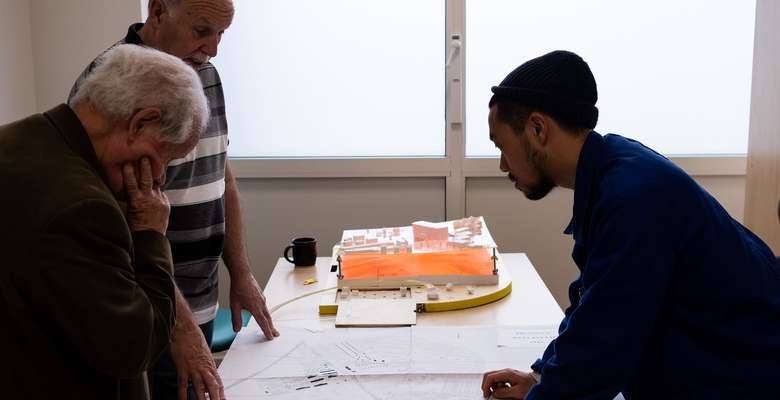
- Systemic changes
In times where politics, ecological disasters and the grip of “the economy” calls into question how individuals, collective action and design-thinking can enable urban change, we investigates alternative methodologies that allow for critical engagement and the inclusion of difference in relation to architecture and the built environment. Plur-ticipation applies theory around commoning and participation into a propositional pluralistic participation that is tested on site to analyse its ability to involve and address the multiplicity within communities. Key findings are that the data produced from a plur-ticipatory process are revealing of the multitude, but forms part of a symbiotic process in which the results will need to be fed back to the community and (re)read and (re) diffracted to be understood. They are not to be read as individual solutions to a problem, rather expressions of a larger whole.
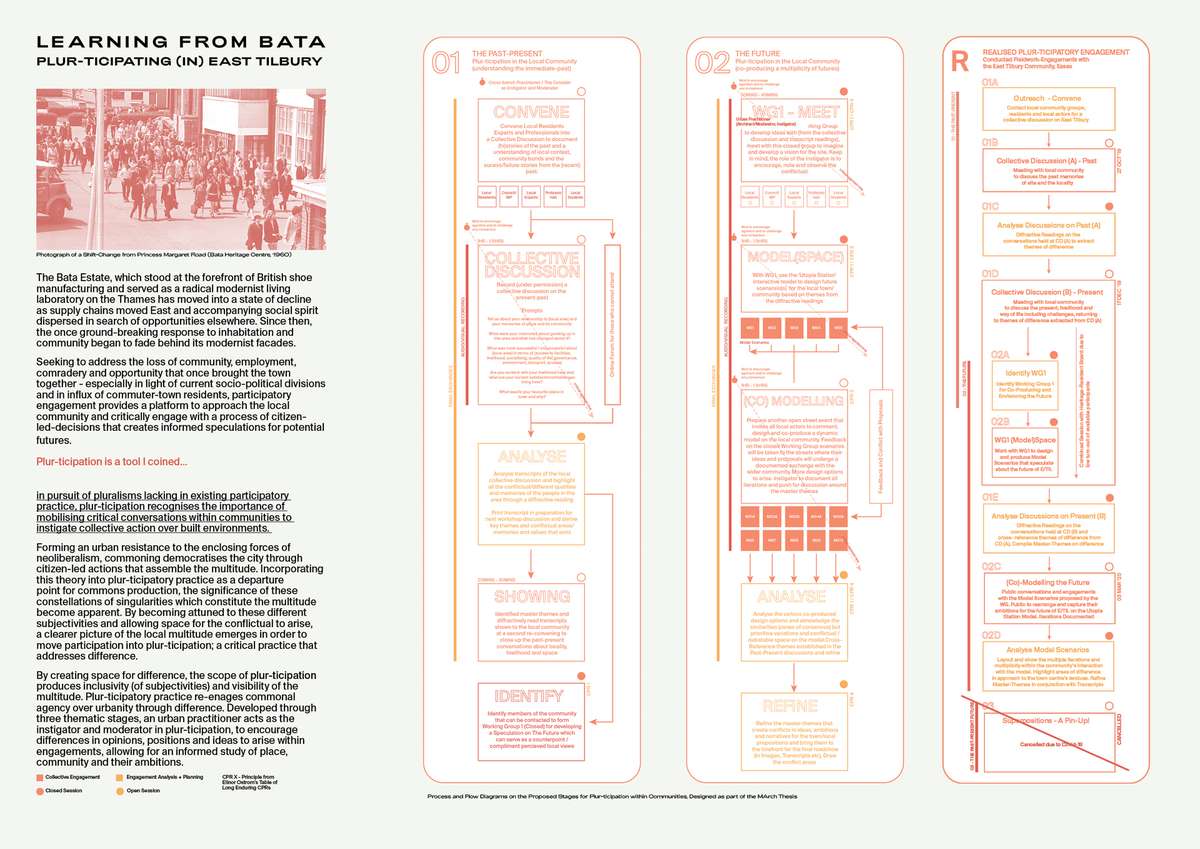
Designing and presenting new models for community and local engagement through studying the concept of participation within Etienne Wenger’s (1998) theoretical framework for practice and review the history of participatory design through the work of Paul Jenkins and Leslie Forsyth (2010) to form a critique on contemporary modes of community “participation” that aim for consensus and sameness.
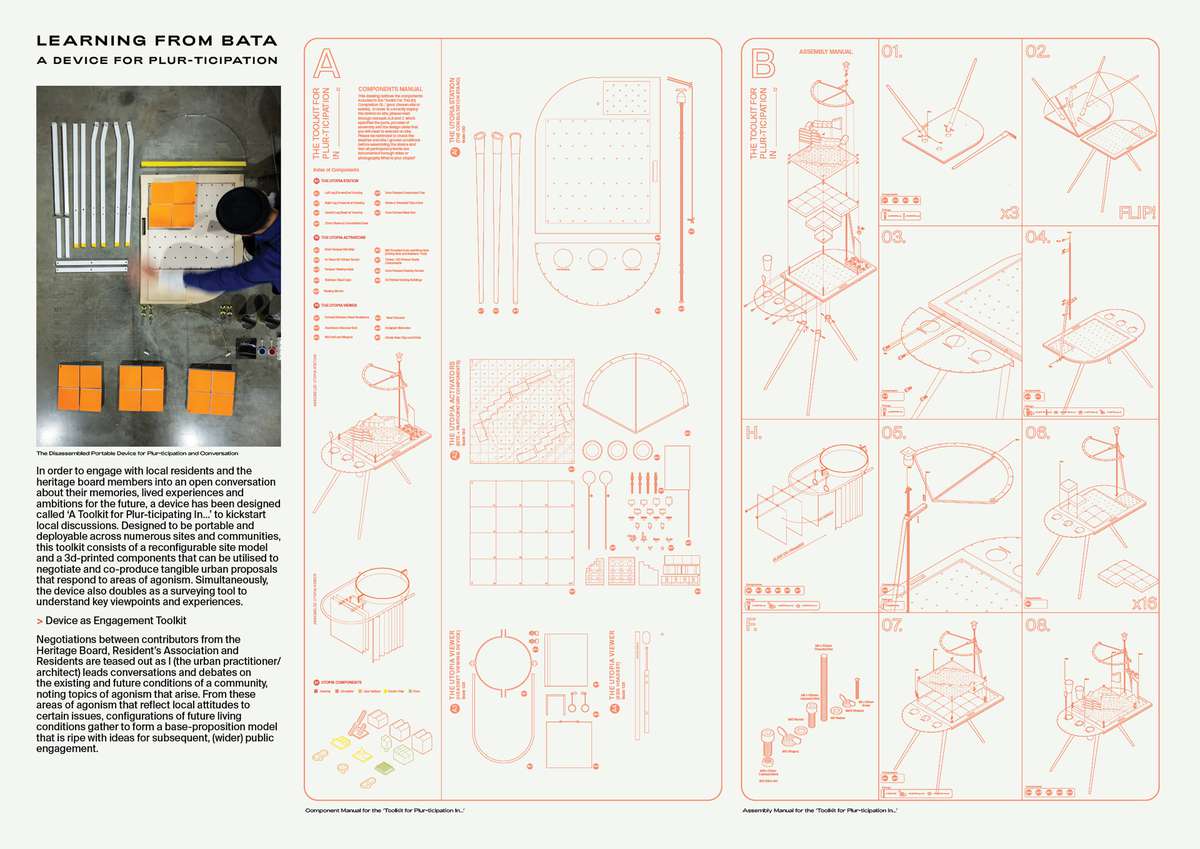
A designed, plur-ticipatory toolkit for enabling speculations and conversations on the present and future urban negotiations that could manifest on-site. This device can be re-appropriated for different sites to kickstart conversations between residents, local governance, third sector organisations and the built environment professionals.
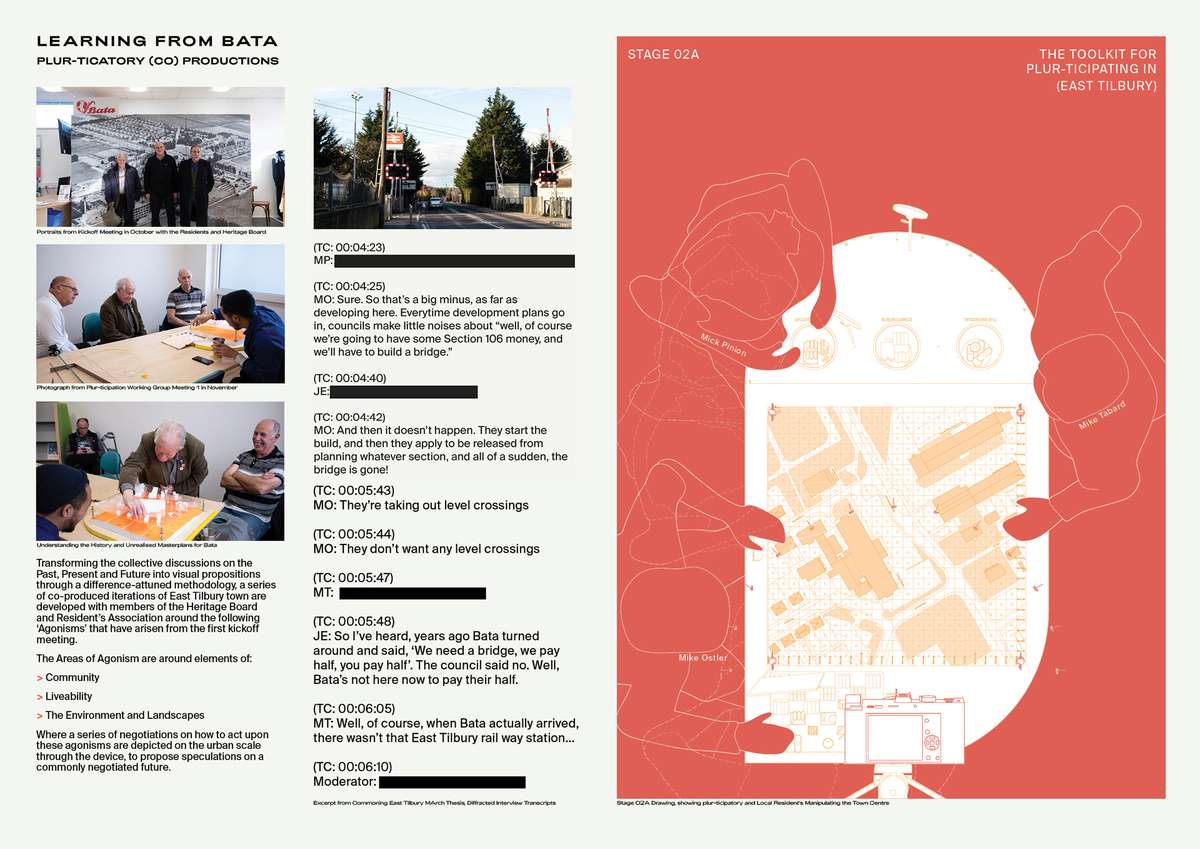
Discussions with the local heritage board and resident's association that have been re-interpreted into 'diffracted' transcripts that visualise local areas and topics of agonism that exist in relation to a site. Through this, Chantal Mouffe’s (2005) deliberations for an agonistic practice that ruptures the “consensus-based, deliberately positive” process of participation will shape an alternative term and methodology in (reading) engagement that is pluralistic and attuned to difference

Photograph of an expanded plur-ticipatory engagement at East Tilbury to re-negotiate plans that address the agonisms on community (or the lack of), the environment and liveability

Drawings and fieldnotes that express these moments of agonism in response to notions of Community, Environment and Liveability (in separate models). This act of drawing and documenting local 'difference' allows for new conversations and the voices of various individuals that co-create a place to be heard and enacted.
Plur-ticipation : Commoning East Tilbury
Plur-ticipation : Commoning East Tilbury

- Systemic changes
In times where politics, ecological disasters and the grip of “the economy” calls into question how individuals, collective action and design-thinking can enable urban change, we investigates alternative methodologies that allow for critical engagement and the inclusion of difference in relation to architecture and the built environment. Plur-ticipation applies theory around commoning and participation into a propositional pluralistic participation that is tested on site to analyse its ability to involve and address the multiplicity within communities. Key findings are that the data produced from a plur-ticipatory process are revealing of the multitude, but forms part of a symbiotic process in which the results will need to be fed back to the community and (re)read and (re) diffracted to be understood. They are not to be read as individual solutions to a problem, rather expressions of a larger whole.
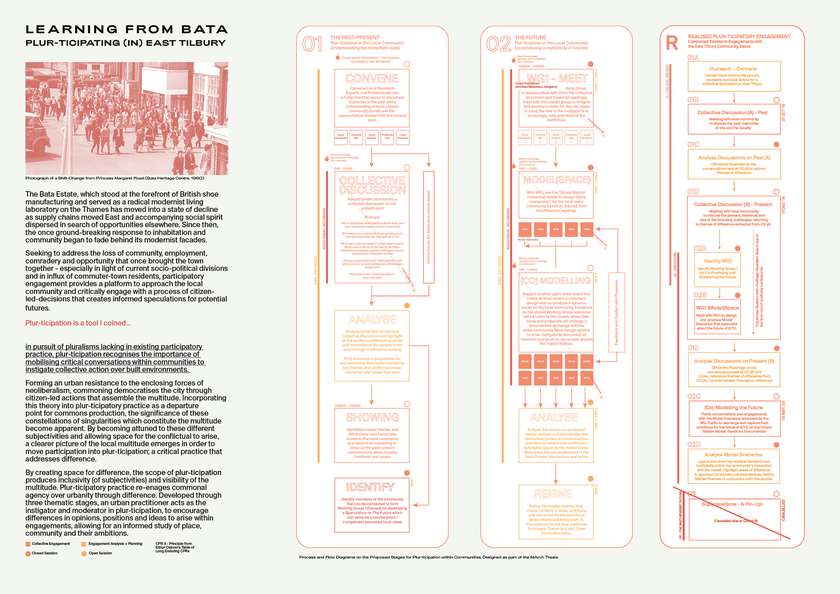
Designing and presenting new models for community and local engagement through studying the concept of participation within Etienne Wenger’s (1998) theoretical framework for practice and review the history of participatory design through the work of Paul Jenkins and Leslie Forsyth (2010) to form a critique on contemporary modes of community “participation” that aim for consensus and sameness.
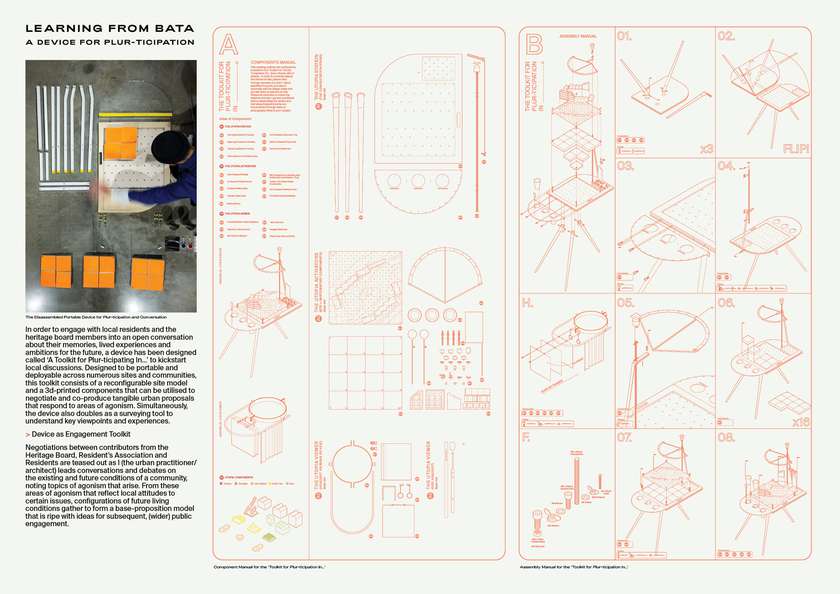
A designed, plur-ticipatory toolkit for enabling speculations and conversations on the present and future urban negotiations that could manifest on-site. This device can be re-appropriated for different sites to kickstart conversations between residents, local governance, third sector organisations and the built environment professionals.
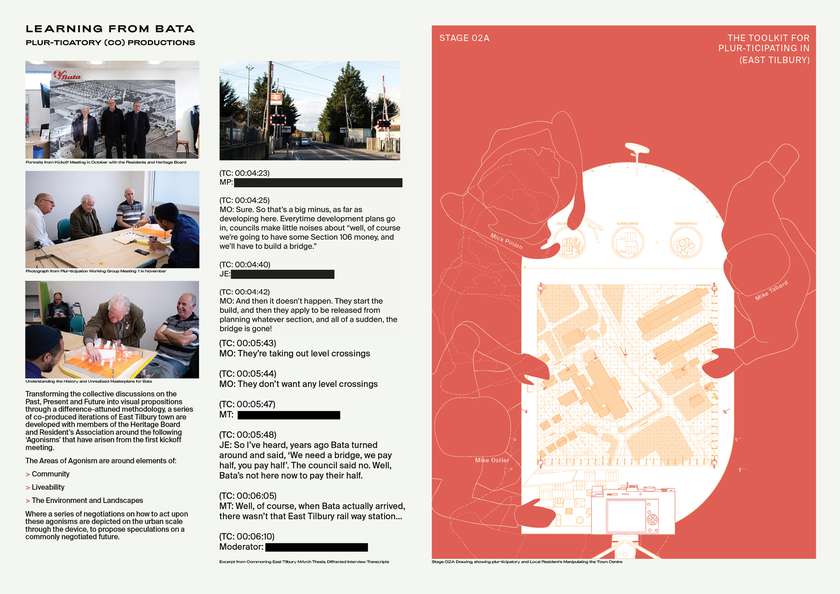
Discussions with the local heritage board and resident's association that have been re-interpreted into 'diffracted' transcripts that visualise local areas and topics of agonism that exist in relation to a site. Through this, Chantal Mouffe’s (2005) deliberations for an agonistic practice that ruptures the “consensus-based, deliberately positive” process of participation will shape an alternative term and methodology in (reading) engagement that is pluralistic and attuned to difference
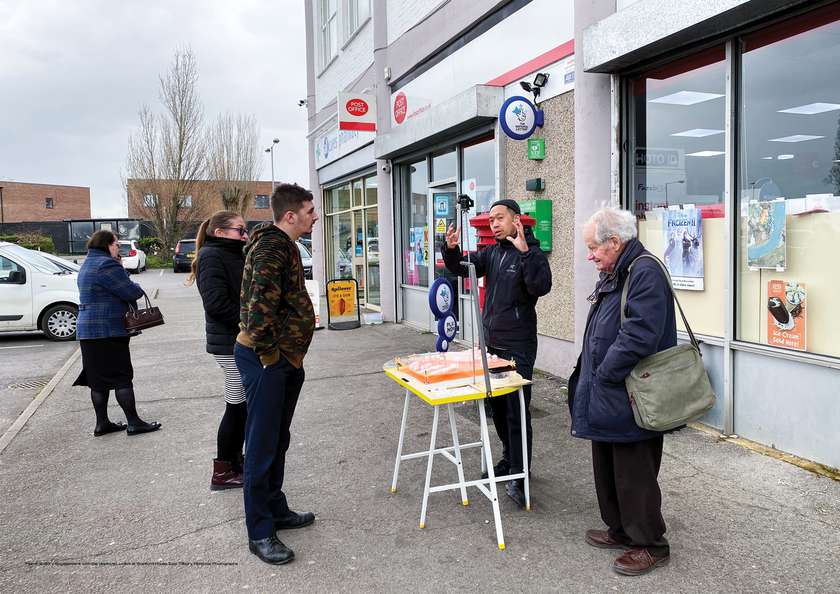
Photograph of an expanded plur-ticipatory engagement at East Tilbury to re-negotiate plans that address the agonisms on community (or the lack of), the environment and liveability
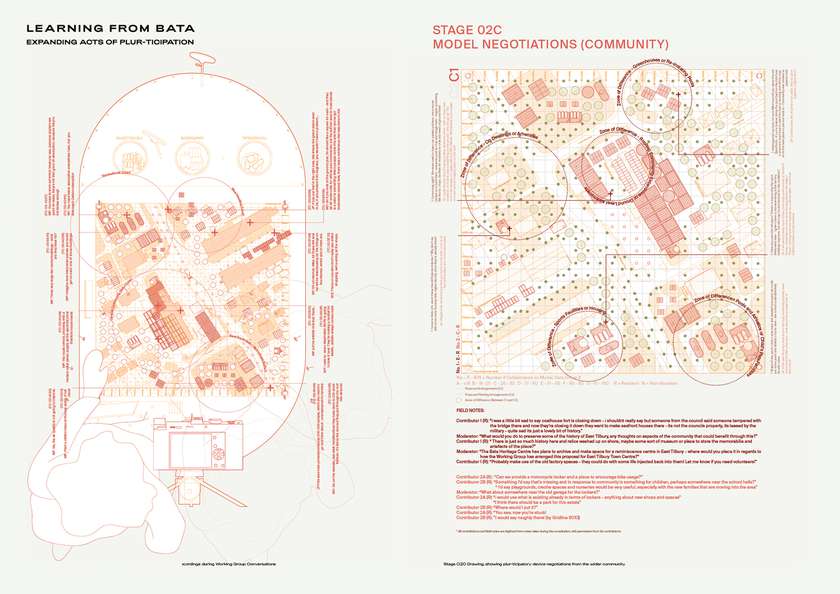
Drawings and fieldnotes that express these moments of agonism in response to notions of Community, Environment and Liveability (in separate models). This act of drawing and documenting local 'difference' allows for new conversations and the voices of various individuals that co-create a place to be heard and enacted.